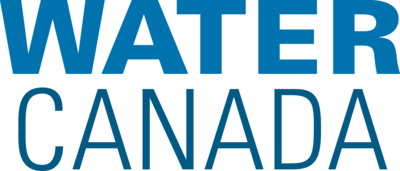WC131 JulyAugust 2023 - Magazine - Page 36

INDIGENOUS PERSPECTIVES
”The value proposition of scaling up Community Circle
for small businesses include capturing contextual
data and an empathetic and granular view of the rural
community relationship.”
36
WATER C AN ADA • JULY/AUGUS T 2023
Circling on community
The choice was clear, and we soon shifted
gears on our original research grant to
develop a new value creation model, which
we called Community Circle. It’s a process
built on Indigenous pedagogical and andragogical strategies
(Talk Story) that incorporates Elders’ knowledge passed down
from previous generations’ dialogue with listeners to build
collective understanding, allowing participants to contextualize
theory with their life experiences to build group consciousness.
Community Circle has to date lifted six long-term boil water
advisories on reserves, responded to climate-change emergencies, and implemented several unique drinking water treatment
and training solutions. These projects succeeded via process
and technology innovation over several years, and even during
the pandemic. Better still, the projects earned communities’
acceptance and were implemented at a nearly 30 per cent cost
optimization compared with conventional practices. (Along the
way, the Circle has received numerous awards, but community
approval is truly the highest honour.)
Economic problems faced by rural communities are rooted
in the complexities of knowledge sharing and utilization—no
single individual or organization possesses all relevant quantitative and qualitative data required to assess or truly tackle
these complex issues. Adding to the complexity is the fact that
physical infrastructure upgrade processes can overlap with the
interests/projects/jurisdictions of multiple federal/provincial
government agencies. The success of our Community Circle
model so far has been the result of creating neutral, non-politicized spaces for interaction of domain experts from different
knowledge and value systems to disperse their knowledge
among individuals and organizations as widely as possible,
while transferring values and insights across disciplines.
That brings us to 2023.
Looking to the national stage
The next step for RESEAU is to scale this new value creation
model, and in particular streamline decision-making around
buying/building/borrowing solutions (i.e., problem identification,
solution exploration, requirements building, and supplier
WAT E R C A N A D A . N E T
Getty Images
A significant downside to regret in major infrastructure
decisions includes longer purchase and implementation
timelines, frustration for teams on both the supplier and
the community sides, squandered financial and human
resources, and dissatisfaction with/mistrust of the process
and stakeholders involved. For industry, the complexity of
the technology adoption process means slower expansion and
longer purchase/contract cycles, forcing them to shift focus on
identifying customers who are the “best fit” for their product
lines, with a reduced emphasis on providing more customized
solutions.
Industry research by Gartner estimates that, by 2025,
75 per cent of companies globally will proactively “break
up” with “poor-fit” customers as the cost of retaining them
eclipses “good-fit” customer acquisition costs. This will
have profound implications for achieving UN Sustainable
Development Goals by 2030, as new waves of frustrations
and societal unrest from Indigenous and rural communities
develop globally in response to essentially becoming ghosted
by enterprise, which seeks to boost revenue and profitability
in the long run by avoiding costly customization.
It also has profound implications for Canada’s Indigenous
and rural communities as they seek to improve water health,
the achievement of which involves work in several other
domains, including drinking water, wastewater, agriculture/
fisheries, housing, energy, and more. All of these are greatly
influenced by climate change, emerging natural and human-made contaminants, and evolving crises/shifts in politics,
health and the environment.
The net result is that rural communities require new highly
customized knowledge and technology/tools to solve water
health challenges that are unique to their location, history,
culture, language, population—the exact opposite of the “best
fit” customer that technology and other solutions providers
increasingly seek.
So, we asked ourselves and our partners at
the community of practice and industry level:
If we better understand rural and Indigenous
communities’ multidimensional construct of
the day-to-day life and relationships, will we
be better positioned to collectively serve their
needs today and in the future?
Certainly, we recognized that if we pursued innovation-as-usual, we’d run the risk
of leaving Indigenous values and perspectives
behind altogether.